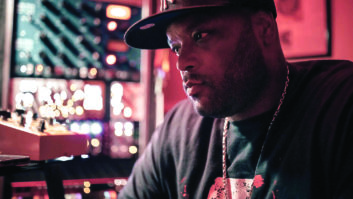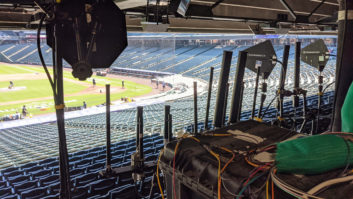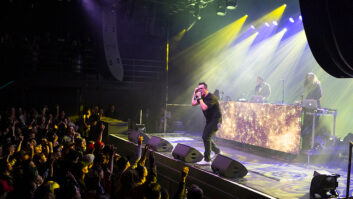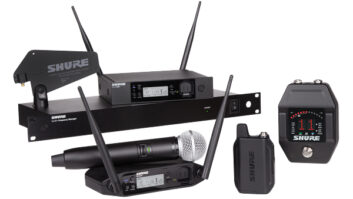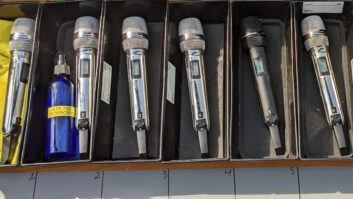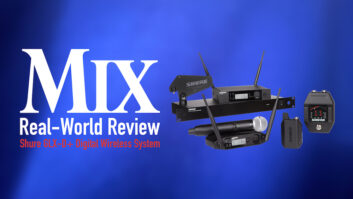Orlando, FL (March 16, 2012)—The annual NBA All-Star Weekend is all about razzle-dazzle, and this year’s edition, held at at the Amway Center in Orlando, Florida, was no exception, featuring performances by Nicki Minaj, Pitbull, Chris Brown, Ne-Yo, Mary J. Blige and others. For the second year running, Wireless First/Clair Global tackled wired and wireless audio for all of the performers and events and deliveed it to the house and to the broadcast feeds, in addition to providing behind-the-scenes communications.

“The challenges of the NBA All-Star Weekend really revealed themselves last year,” explained Jason Spence, president of J Sound, who consulted with Volume Inc. on sound design for the event and then mixed monitors on game day. “Audio distribution was – and is – a big issue. Last year, we had analog splitters – racks and racks of them, in fact – and they not only compromised the sound, they also made errors easy to commit and difficult to track down.” Clair Global’s Paul Cervenansky, the systems engineer for both years, concurred, “Last year, I was in charge of a wall of copper, and all of the consoles had stage racks. The broadcast trucks dropped off fiber heads to which we successfully converted. It all worked and we delivered a great show, but it was a nightmare for me, especially when someone wasn’t getting a signal in a high pressure situation.”
This year, Wireless First/Clair Global brought a Stagetec Nexus system to the NBA All-Star Game. With appropriate options, the Nexus hardware accepts inputs of any analog or digital format and then, via a software interface, routes them to any number of outputs with truly negligible latency and no loss of information. “The Nexus system has taken patch changes to a whole new level,” declared Kevin Sanford, president of Wireless First/Clair Global Broadcast. “Instead of staring at five 80-input, four-way splits and devoting up to several minutes to any patch change request, this year, Paul [Cervenansky] sat behind four 19-inch displays and exercised his index finger to make error-free patch changes in the time it takes to click a mouse. Moreover, he had a visual of the entire system on those screens with real-time metering information of cross points making it easy to fax lines and keep a good gain structure throughout the system.” Cervenansky noted that he benefitted from the help of ESPN mixer Jonathan Freed, Stagetec USA president Rusty Waite, and Stagetec VP of broadcast systems James Williamson.
Wireless First/Clair Global also handled the wireless audio for performance microphones, personal monitors, and communications, coordinating with the NBA to avoid interference with other RF users. “The biggest challenge was getting solid RF coverage throughout the whole arena,” said Josh Flower, RF and comms system engineer. “We were surrounded by LED screens in the walls and the deck of the halftime performance area, which make our lives easier by raising the RF noise floor.” Where possible, Flower maximized signal to noise by decreasing transmission distances, such as using a directional IEM antenna twenty feet away from national anthem performances on center court.
Clair Global’s own CF 1090 fractal antenna was used with a custom RF-over-fiber system to provide RF coverage in the arena bowl, the locker room, and the adjoining hallways. A full 32 channels of Shure and Sennheiser wireless mics, eight channels of Shure PSM 1000 wireless personal monitors, and 18 channels of Telex BTR wireless intercoms kept the RF team busy. In addition, there were six node Riedel system that provided communications between the broadcast compound to inside the arena and to the Sprint pre-game concert outside on the street.
Wireless First
www.clairglobal.com

